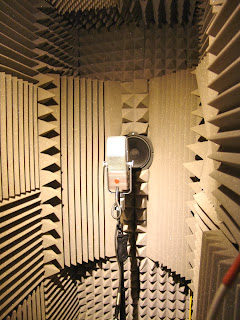zebra50 said:
>Stewart, could you also upload an impulse response of your Source speaker using a good reference measurement omni like B&K 4133 or 4191? But a Behringer ECM8000 will do at a pinch especially if you've got an early one.
As I understand it, Fuzzmeasure automatically corrects for the calibration mic. But I will try to dig out the calibration sweep(s) in case you want to play further with the processing.
I use a Beyer measurement mic, which is probably mid-way between the B&K and the Behringer. I should probably invest in a B&K, but they are a lot of money!
I'm not a rich Mac user so have no idea of how good Fuzzmeasure is.
You need to use the reference measurement to calibrate out the source AND apply the measurement mikes calibration too.
The reason for B&K is I believe their calibration curves ;D
The cheapest way to get a B&K reference mike is to buy a 4133 or 4191 capsule off eBay (making sure it is undamaged and still has its calibration curve) and make your own 200V preamp (what the capsule screws into) Les Watts at MicBuilders can advise as he's done exactly this.
______________
From reading the Fuzzmeasure blurb, they are using Prof Angelo Farina's exponential sweep method.
I developed the theory for this in the early 80's for production testing of speakers for response & THD in the theoretically shortest possible time but the computing power and particularly good A/Ds were too expensive for what we wanted.
When I emerged from the bush after more than a decade, I found computing power in the cheapest laptop was more than sufficient and good A/Ds could be got cheaply though you have to be careful what you use.
I can now make better measurements in my shed than I could using anechoic etc in the 90s using my DOS version of Angelo's method.
____________________
Alas, my software requires Windoz98 and the machines that do this are now dying. I'm presently using XP to run VirtualPC to run W98 to run DOS for my own software. Redmond will stop support for XP next year so I'm stuck.
I've tried to move my software to a modern compiler but 2 decades is a long time to be away in software. I've been thwarted twice cos the machines I can afford off eBay died after labouriously loading da humungous modern compilers.
____________________
If you've got Fuzzmeasure, you can get better measurements down to about 200Hz in a domestic room. The ceiling height sets your limit. Below that, you can do good omni measurements cos your measurement mike is an omni but if you know what you are doing, you can get good estimates for cardioids & fig-8s too.
Read the Clio manuals to understand quasi anechoic measurements.
Also have a look at Cooktown Recording & Ambisonic Production's facilities in my Yahoo MicBuilders Group Files.
____________________
If you post a reference measurement using your Beyer, I can do some anechoic frequency responses. Got a calibration curve for your Beyer?
____________________
Do you have any contact with York Uni and in particular, David Malham of the Music Dept. who's just retired? He's an Ambisonic Surround Sound guru and has one of my mikes.




